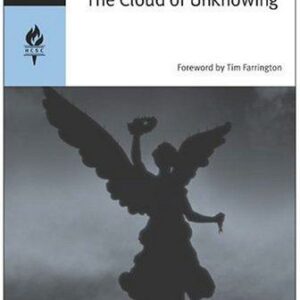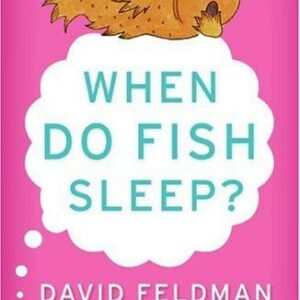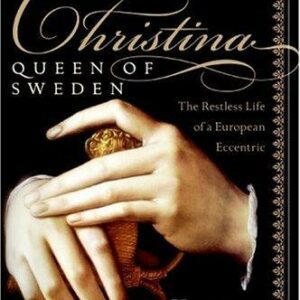The Ottoman Endgame
$21.00
| Title | Range | Discount |
|---|---|---|
| Trade Discount | 5 + | 25% |
- Description
- Additional information
Description
Description
An astonishing retelling of twentieth-century history from the Ottoman perspective, delivering profound new insights into World War I and the contemporary Middle East
Between 1911 and 1922, a series of wars would engulf the Ottoman Empire and its successor states, in which the central conflict, of course, is World War I—a story we think we know well. As Sean McMeekin shows us in this revelatory new history of what he calls the “wars of the Ottoman succession,” we know far less than we think. The Ottoman Endgame brings to light the entire strategic narrative that led to an unstable new order in postwar Middle East—much of which is still felt today.
The Ottoman Endgame: War, Revolution, and the Making of the Modern Middle East draws from McMeekin’s years of groundbreaking research in newly opened Ottoman and Russian archives. With great storytelling flair, McMeekin makes new the epic stories we know from the Ottoman front, from Gallipoli to the exploits of Lawrence in Arabia, and introduces a vast range of new stories to Western readers. His accounts of the lead-up to World War I and the Ottoman Empire’s central role in the war itself offers an entirely new and deeper vision of the conflict. Harnessing not only Ottoman and Russian but also British, German, French, American, and Austro-Hungarian sources, the result is a truly pioneering work of scholarship that gives full justice to a multitiered war involving many belligerents.
McMeekin also brilliantly reconceives our inherited Anglo-French understanding of the war’s outcome and the collapse of the empire that followed. The book chronicles the emergence of modern Turkey and the carve-up of the rest of the Ottoman Empire as it has never been told before, offering a new perspective on such issues as the ethno-religious bloodletting and forced population transfers which attended the breakup of empire, the Balfour Declaration, the toppling of the caliphate, and the partition of Iraq and Syria—bringing the contemporary consequences into clear focus.
Every so often, a work of history completely reshapes our understanding of a subject of enormous historical and contemporary importance. The Ottoman Endgame is such a book, an instantly definitive and thrilling example of narrative history as high art. “A sweeping account…The most original and passionately written parts concern the fight between Russians and Turks in eastern Anatolia and the Caucasus. Two things distinguish Mr. McMeekin from many other writers in English about this period. First, he has a deep empathy with Turkish concerns, and he hews closer to the official Turkish line than to the revisionist, self-critical approach taken by some courageous Turkish liberals. Second, he has some unusual insights into imperial Russian thinking, based on study of the tsarist archives…[Mr. McMeekin] brings some useful correctives into focus.”—The Economist
“Using previously unknown sources from Ottoman and Russian archives, [McMeekin] denounces the notion that the Middle East as we know it today is a legacy of World War I and Anglo-French decisions in the Sykes-Picot Agreement of 1916. He argues that events far richer and more intricate caused the end of the empire…[A] valuable academic work.”—Library Journal
“Magisterial…Giving events in the Ottoman theater the same attention to detail usually reserved for the Western front, McMeekin argues that principals on all sides were stymied by myopic preconceptions as the war gained steam, with movements on the ground easily overcoming any pretense of rational planning…McMeekin’s gripping narrative style and literary panache make this work an attractive resource for anyone looking to further understand the destruction and dislocation in Asia Minor that ushered in the modern age.”—Publishers Weekly, starred review
“Thought-provoking…McMeekin observes early on that there’s much more to [the] story than the smoothly duplicitous diplomacy that makes up the last hour of Lawrence of Arabia and much more than T.E. Lawrence himself…Thriving on untold stories, McMeekin looks at the punctuated collapse of the Ottoman Empire in Eastern Europe and its momentary successes following the Bolshevik Revolution in Russia, which had the effect of exposing rivalries between the Ottomans and their German allies that almost resulted in war on yet another front. The author also gives a lucid account of the geneses of secular governments in what became Turkey and those of more theocratically or autocratically inclined ones in the neighboring former provinces…Vigorous and accessible.” —Kirkus
“A well-timed, well-researched exploration of the empire whose dissolution continues to complicate making sense of the contemporary Middle East. Herein are explanations of how modern Turkey, Iraq, and Syria came to be, as well as how the division of the rest of the region affected its future. Scholars and practitioners alike will benefit from reading it.”-Henry Kissinger
“Where conventional histories of World War One focus on the trench warfare in the West, Sean McMeekin, combining ground breaking archival research with a genius for historical narrative, tells the story of the war in the East. From the Bolshevik Revolution to the Armenian Genocide, McMeekin weaves the dramatic and world shaking events of one of history’s greatest conflicts into a compelling and original story. As characters like Leon Trotsky, Kemal Ataturk and Winston Churchill stride — or in some cases, slink — across these pages, readers will see some of history’s most important events from a fresh perspective. There are many histories of World War One; few are as important or as readable as this one.”-Walter Russell Mead
“Sean McMeekin’s The Ottoman Endgame pleases like a mouthful of Turkish delight, the flavors, scents and views of the old empire combining in a gripping new history that plunges the Turkish Empire into the Great War and locates Constantinople not at the edge of the conflict but at its very heart. McMeekin pulls all of the familiar but disconnected threads together in a stunningly original way: the Young Turks, the Balkan Wars, the German alliance, Gallipoli, Iraq, the vast, forgotten battles with the Russians in the snowy Caucasus, the Armenian genocide, the naval struggle on the Black Sea, and the frothy legend of Lawrence of Arabia. The crucial influence of these far-reaching Turkish campaigns on World War I and its aftermath emerges in McMeekin’s wry, delightful book, which fills in a neglected face of the war and traces the emergence of the modern Middle East.” -Geoffrey Wawro, author of A Mad Catastrophe: The Outbreak of World War I and the Collapse of the Habsburg Empire and Quicksand: America’s Pursuit of Power in the Middle East
“A real feat of historical scholarship, offering genuinely new interpretations and fresh insights into the origins of the modern Middle East.”-Roger Crowley, author of 1453: The Holy War for Constantinople and the Clash of Islam and the West
“McMeekin synthesizes an impressive amount of fresh material from across Europe’s archives in this balanced and perceptive analysis of the twelve-year War of Ottoman Succession, between 1911, and 1923, that ended an empire after six centuries; redrew the map and reshaped the culture of the Middle East; and almost tangentially played a crucial role in the outbreak of World War I and the peace that—temporarily—concluded it.”-Dennis Showalter, professor of history, Colorado College
“Sean McMeekin has an infernal panorama to describe, as, over twelve years, the Ottoman Empire fell apart, giving us problems that have gone on to this day. The subject has found a writer with all the linguistic and scholarly qualifications to do it justice.”-Norman Stone, author of Turkey: A Short History
“A tour de force. Using an unprecedented array of new sources—German, Russian, Turkish, French and British—Sean McMeekin not only describes a key aspect of the First World War but also provides a key to the tragedy of the Middle East today.”-Philip Mansel, author of Levant: Splendour and Catastrophe on the MediterraneanSean McMeekin is a professor of history at Bard College. He is the author of July 1914: Countdown to War, which was reviewed on the cover of The New York Times Book Review; The Russian Origins of the First World War, which won the Norman B. Tomlinson Jr. Book Prize and was nominated for the Lionel Gelber Prize; and The Berlin to Baghdad Express: The Ottoman Empire and Germany’s Bid for World Power, 1898–1918, which won the Barbara Jelavich Book Prize; among other books. He previously taught at Koç University, Istanbul; Bilkent University, Ankara; and Yale University.
SEPTEMBER 7, 1876
________
FROM EVERY CORNER OF THE EMPIRE they came to witness the ceremony. The streets were aglow with the colorful costumes of the empire—red conical fezzes with black silk tassels, white turbans, Arab-style keffiyehs, alongside the elegant formal wear of European diplomats. Witnesses claimed that a hundred thousand souls lined the waterfront, craning to catch a glimpse of the sovereign-to-be as he was rowed in his white-and-gold caïque from the Bosphorus past the teeming multitudes on the Galata Bridge. After docking on the Golden Horn, the thirty-four-year-old heir mounted his white charger and rode through the Imperial Guard to Eyüp mosque, the most sacred in the empire, built by Mehmet the Conqueror after the fall of Constantinople in 1453. Here, beneath the silver shrine to the Prophet’s standard bearer, who fell during the Arab siege of the city in 670, Abdul Hamid II was girded with the Sword of Osman, empowering him as the thirty-fourth sultan of the empire and (following the conquest of the holy places in 1517) twenty-sixth Ottoman caliph of the Islamic faithful.
While most observers agreed that the new sultan conducted himself with great dignity during the proceedings, there were discordant notes that seemed to bode poorly for his reign. Physically, Abdul Hamid was so unprepossessing that the Sword of Osman seemed to dwarf his slight frame. The much taller Sheikh-ul-Islam who invested him with the sword had to bend over sharply in order to kiss the sultan on the left shoulder, as required by tradition. Other portentous incidents transpired elsewhere in the city, where crowding on the Galata Bridge caused it to partially collapse nearly four feet, and to very nearly sink into the Golden Horn. Just a stone’s throw away, a cable snapped in the underground funicular tram linking the quay with Pera, the European quarter up on the hill.1
More ominous still was the news from Europe. The previous October, then-sultan Abdul Aziz, bankrupted by the compounding interest on his own palace extravagances, had suspended payments on Ottoman bond coupons, a default that had alienated thousands of bondholders, of whom a large and vocal number were to be found in Paris and London. When a Christian uprising spread across Ottoman-ruled territory in the Balkans, the government (generally called the Sublime Porte) thus found itself bereft of sympathy. It tried to douse the flames of Balkan unrest, sending in irregular Circassians (the Bashi-Bazouks) in part because pay to the regular army was in arrears. By summer 1876, stories of horrendous atrocities had spread across Europe. Coming out of retirement to chastise the British government of Benjamin Disraeli for its indifference, the former prime minister William Ewart Gladstone worked himself into a state of high moral dudgeon in a soon-to-be world-famous pamphlet denouncing the Bulgarian Horrors, which hit newsstands even as Abdul Hamid was being girded at Eyüp. While Disraeli, condemning both sides as “equally terrible and atrocious,” dismissed Bashi-Bazouk horror stories as “coffee-house babble,”* Gladstone saw in them proof that Turks were “the one great anti-human specimen of humanity,” who should be “clear[ed] out from the province they have desolated and profaned . . . bag and baggage.”2
Gladstone said nothing that pan-Slavist propagandists, many on the tsarist Russian payroll, had not already been saying for months. But he said it with the full fury of English parliamentary eloquence, raising the frightful prospect for Abdul Hamid II that Great Britain, Turkey’s traditional protector against Russian encroachment, would do nothing to help her if the tsarist armies intervened in the Balkans, as looked increasingly likely as volunteers boarded train after train in Moscow that summer, hoping—like Tolstoy’s Vronsky in Anna Karenina—to strike a blow for Slavdom. With (unofficial) Russian encouragement, Serbia had declared war on Turkey in June, placing her army under the command of Russian general Mikhail Grigorievich Chernyaev, recent conqueror of Tashkent. Montenegro had then piled on too. Adding insult to injury, none other than Lord Stratford Canning, the now-retired longtime ambassador to the Porte who had almost single-handedly brought Britain into the Crimean War on the Ottoman side, publicly endorsed Gladstone’s anti-Turkish stance in a letter to the London Times—indeed, Gladstone had dedicated the Bulgarian Horrors to Canning. In an especially embittering touch, Canning was the first foreigner Abdul Hamid, while a sickly and lonely young child, had met, three decades ago, in a chance encounter in the Topkapı Palace gardens—in fact, Canning was the first adult of any nationality to have treated the boy with genuine kindness, such that the future sultan remembered the incident decades later. If Russia’s ambitions to partition the Ottoman Empire—first broached by Tsar Nicholas I in 1853 in conversation with the British ambassador when he called it the “Sick Man” (of Europe)—now had the tacit support of Abdul Hamid’s hero and Britain’s most notorious Turcophile, there would seem to be little hope for the empire’s survival.
Still, despite the litany of disturbing news pouring into the capital, Abdul Hamid had reasons for guarded optimism as he left the Eyüp mosque. He had already achieved more than his immediate predecessor, Murad V. Although hailed by large and enthusiastic crowds as the “Great Reformer” after the violent deposition of Abdul Aziz in May, Murad had never mustered the strength to face the public in an accession ceremony. During his years in the kafes, or gilded confinement, endured by all heirs to the throne, Murad had developed a fatal taste (on a heavily chaperoned trip to Paris) for champagne laced with brandy. Already shaky, within days of his ascension Murad learned that the deposed Abdul Aziz had committed suicide, slashing both wrists with a pair of scissors (a difficult trick, leading to rumors of foul play). Learning of his predecessor’s fate, Murad fainted. When he came to, he fell into a violent fit of vomiting. As if this were not enough, on June 15, to enact vengeance for the “martyred” Abdul Aziz, a young Circassian officer, whose sister Nesrin had been the late sultan’s harem favorite, blasted his way into a cabinet meeting, murdering the conspirator who had deposed him—War Minister Hüseyin Avni, along with the foreign minister, Pasha. Small wonder Murad was a gibbering wreck (diagnosed with “monomania of the suicidal type”), unable to receive the Sword of Osman, meet ambassadors, or carry out any other duties of a sultan. Simply by making it through the girding ceremony unscathed, Abdul Hamid had done much to restore public confidence in the embattled empire.
True, the young sultan was an enigma, an unknown quantity even to his advisers. Until the terrible summer of 1876—known to Turks ever after as the “year of three Sultans”—reformist politicians, led by the great constitutionalist Midhat Pasha, along with Christian minorities and scheming European statesmen, had invested their hopes in the handsome and charming Murad, believing him to be sympathetic to Western liberal values (or at least malleable enough to embrace them upon prodding). Abdul Hamid, by contrast, was painfully shy, socially awkward, and odd-looking. His hook nose was so striking that many Turks believed his mother, Pirimujgan, to be secretly Armenian or Jewish (she was in fact the usual Circassian slave dancing girl, briefly a favorite of Sultan Abdul Mecid, before she succumbed to consumption, dying at twenty-six, when her son was only seven). Abdul Hamid, raised by a foster mother and neglected by his father as unpromising, had suffered through a childhood and kafes confinement even lonelier than the norm, his only companions harem women and palace eunuchs. Not unnaturally, his relations with women were generally warmer than with men. Abdul Hamid had been taken into confidence at a young age by Pertevniyal, the Valide Sultana (harem mother) of the martyred Abdul Aziz, who, in her pre-harem days, had been a gossipy bath attendant, which kept her close to the pulse of public opinion. The future sultan had even carried on an affair with an “infidel,” Flora Cordier, a Belgian glove-seller from Pera, who acquainted him with European views of the empire. In the months before his accession, Abdul Hamid had also strolled frequently through the gardens of Therapia with a certain Mr. Thomson, a British trader friendly with Her Majesty’s ambassador Sir Henry Elliott, who acquainted the future sultan with Westminster procedure (Abdul Hamid requested that parliamentary Blue Books be translated into Ottoman for him). Although he was relatively unknown both inside the empire and abroad, few modern sultans had ascended the throne better informed about the world outside the palace than Abdul Hamid II.3
This is not to say, however, that the new sultan was a westernizing liberal in the notional mold of Murad. Midhat Pasha, who had already begun drafting a historic constitution for the Ottoman Empire, had been devastated when Murad proved unable to be the vehicle for his reforms—although curiously it was Midhat who convinced the cabinet to press for Murad’s deposition, despite never having met Abdul Hamid and knowing next to nothing about him. As insurance against any revival of traditional sultanic authority, Midhat Pasha, after being deputized to sound out the young heir, had tried to tie Abdul Hamid’s hands by making his accession conditional on the continued incapacity of Murad V—offering him a regency, that is, not a full-on sultanate. Abdul Hamid, understandably reluctant to rule with a half-mad pretender hovering behind his throne, refused. Negotiations then proceeded, in the course of which Midhat Pasha extracted a promise that Abdul Hamid would promulgate a constitution “without delay.” The heir, for his part, insisted on a formal and permanent deposition of Murad V, on the grounds of confirmed insanity, documented by unimpeachable medical records. On this basis, a deal was struck—a deal that left the young sultan suspicious of Midhat Pasha and the constitutionalists, and unwilling to countenance further meddling in his prerogatives.
Despite the intrigues swirling around his accession, there were sound reasons for the confident air Abdul Hamid assumed at Eyüp. Having lived through two wrenching depositions already that summer, no one in the capital wished to endure a third. In the Balkans, the worst news seemed to be over, even if Gladstone’s fiery pamphlet implied that new atrocities were around the corner. After much fanfare about how the Serbs would destroy the Ottoman army of “old, fat Abdul Kerim,” the Russian-commanded Serbian offensive against Turkey had bogged down quickly, before swinging into reverse in early August, when the Turks captured the gateway to the Morava Valley leading to the heart of Serbia. On September 1, the day after Murad’s deposition and thus the first official day of Abdul Hamid II’s reign, the Serbs and their Russian commander were decisively defeated at Deligrad. By the time the new sultan was girded at Eyüp, Serbia had asked for an armistice, and Ottoman diplomats were drawing up triumphant peace terms to be imposed on Belgrade that would include disarmament, occupation of fortresses, and an indemnity.4 The conqueror of Tashkent had been routed, Serbia humiliated, and the Turks were rolling north into Europe again.
With the sultan astride his white steed, “bridled in gold,” the imperial retinue, led by the Sheikh-ul-Islam carrying the green banner of the Prophet, crossed the Golden Horn at the second bridge and rode past the ruined walls of Byzantine Blachernae, the Greek quarter of Phanar and the Orthodox patriarchate, before winding its way into the narrow streets of old Muslim Stambul. At last the procession reached the Sublime Porte, where foreign diplomats, seated upon an “estrade of honor,” paid homage to Abdul Hamid II as sovereign of the Ottoman Empire, ruler of the Black and White Seas, along with lands stretching from the Danube Principalities to the Persian Gulf, the North African Maghreb to the Transcaucasus. On the streets, the people shouted in acclamation, “ çok ! [Long live the sultan!].”
US
Additional information
Additional information
| Weight | 21.6 oz |
|---|---|
| Dimensions | 1.2900 × 6.0100 × 8.9700 in |
| Imprint | |
| ISBN-13 | |
| Author | |
| Audience | |
| BISAC | |
| Subjects | army books, fathers day gifts, history gifts, military history books, world war 1, gifts for history buffs, historical books, history buff gifts, history lovers gifts, dad gifts, history teacher gifts, military books for men, world war 1 books, middle east history books, ww1 books, ottoman empire, the first world war, history of turkey, first world war, gifts for dad, war, military, battles, history books, world history, istanbul, army, history, Cold War, middle east history, WWI, world war i, HIS026000, HIS027090, European history, military history |
| Format |











